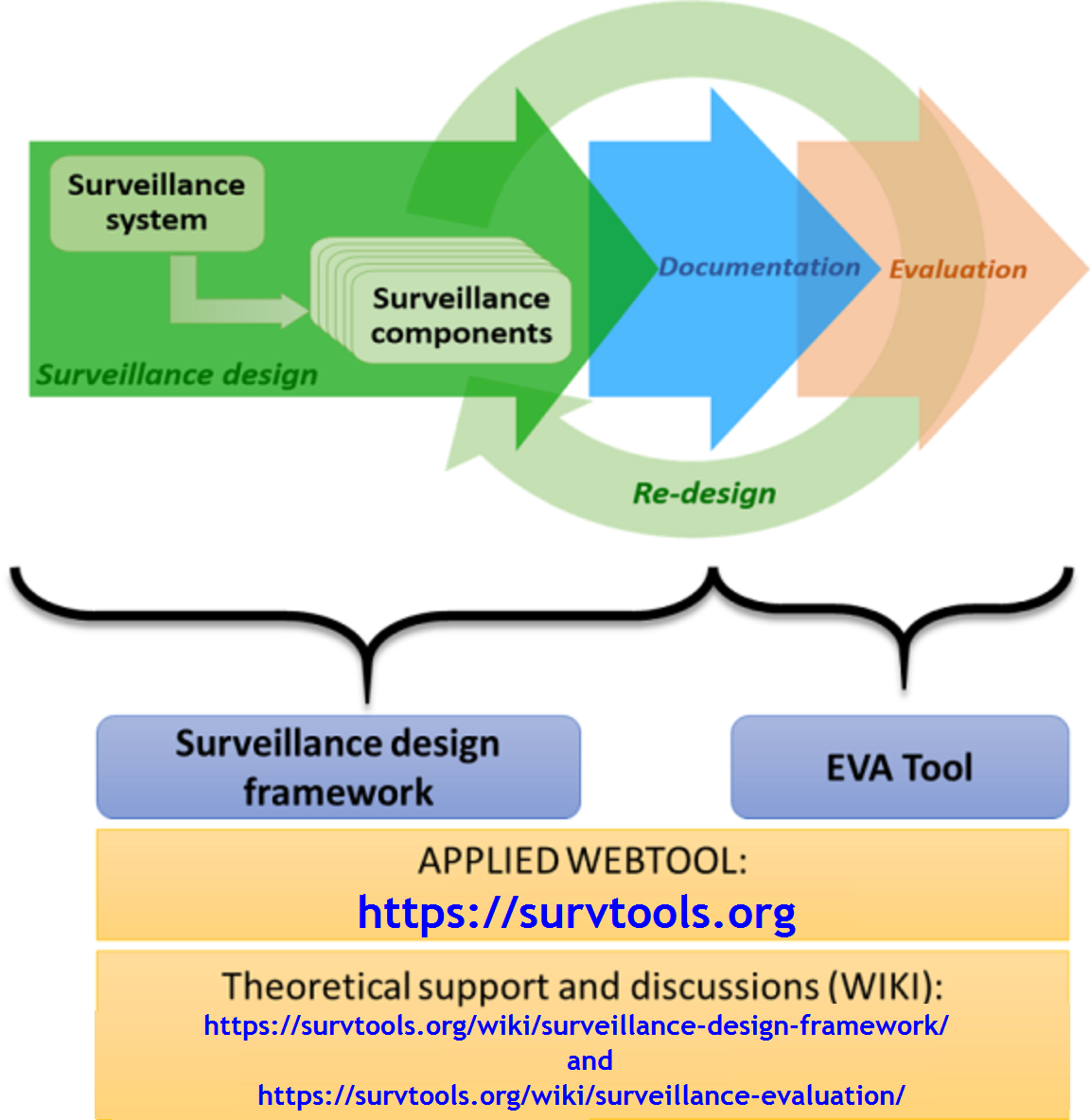The development of surveillance systems is a complex task, and requires an approach that is based on the most up-to-date knowledge effectively integrated between different scientific disciplines and transparent to stakeholders. It should also be recognised that design of efficient surveillance systems usually involves a process of comparing several options, which ideally should include a formal evaluation.
The RISKSUR tools were developed to address these challenges, and in particular provide those designing surveillance in Europe with science-based frameworks to guide them through the systematic process of design and evaluation. They provide an integrated user interface to the underlying design and evaluation frameworks.
The design framework reflects the sequence of steps involved in the development of a surveillance system and its associated components, including defining the target hazard and surveillance objective, target population, surveillance enhancements, testing protocol, study design, sampling strategy, data generation (sample collection), data/sample transfer, data translation (sample analyses), epidemiological analyses, dissemination of results and surveillance review.
The evaluation (EVA) tool helps those advising policy makers in the development of an economic and epidemiological evaluation protocol adapted to their needs. It provides step-by-step guidance on defining the evaluation context, selecting a suitable evaluation question, evaluation attributes, criteria, and methods as well as documentation on the process, methodologies and communication of outputs.
Both tools are publicly available and can be accessed upon registration at https://survtools.org.
They encompass a web interface for users to develop a design/evaluation plan, and WIKI classrooms
https://survtools.org/wiki/surveillance-design-framework/ and https://survtools.org/wiki/surveillance-evaluation/
to provide theoretical information on all required concepts, and promote discussion among surveillance stakeholders in Europe.
The diagram below shows how these resources fit into the surveillance design and evaluation context, and how they complement each other.
You can also watch short videos (see below).

